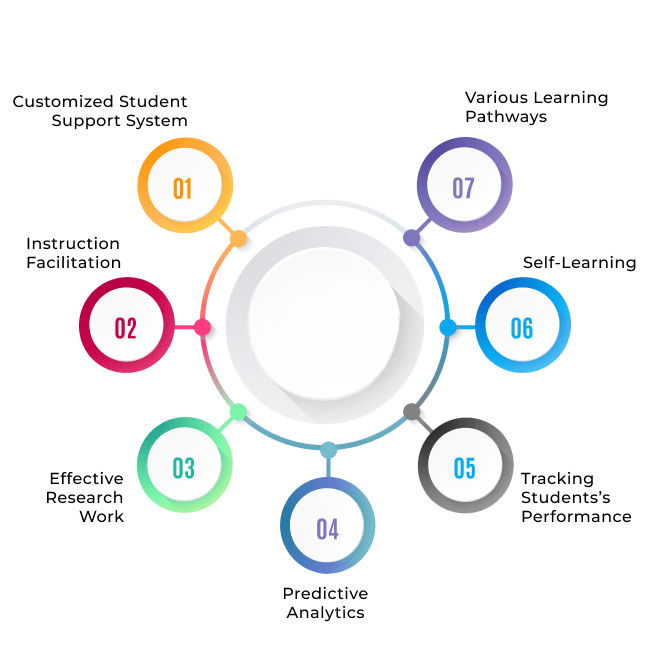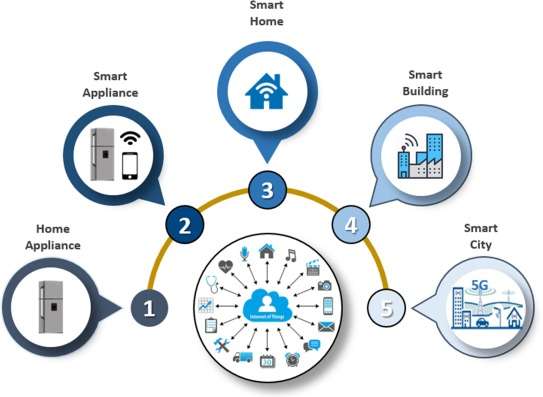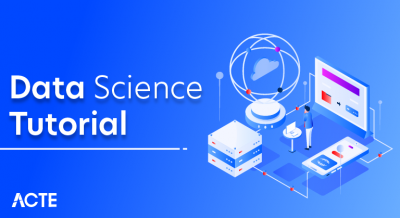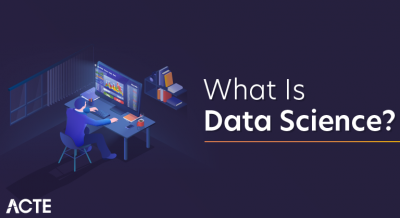
- Introduction to Emerging Technologies
- Automation and AI Impact
- Machine Learning and Robotics
- Blockchain and Security
- IoT and Smart Devices
- Augmented/Virtual Reality
- Cloud Computing and DevOps
- Reskilling and Upskilling
Introduction to Emerging Technologies
Emerging technologies are at the forefront of global innovation, reshaping industries and redefining the way we live, work, and communicate. These technologies include artificial intelligence (AI), blockchain, quantum computing, biotechnology, augmented reality (AR), and the Internet of Things (IoT), among others. They represent significant advancements in Enroll in our Data Science training that have the potential to disrupt traditional systems and create new opportunities across diverse sectors such as healthcare, finance, education, transportation, and manufacturing. For example, AI is enhancing decision-making and automation, while blockchain is improving data security and transparency. Meanwhile, IoT is connecting everyday devices to collect and exchange data, and biotechnology is enabling breakthroughs in medicine and agriculture. Understanding these technologies is crucial not only for tech professionals but also for anyone aiming to adapt to and succeed in the modern world. This introduction provides a foundational insight into how these innovations work, their current applications, and the societal, ethical, and legal challenges they may pose. As the pace of change accelerates, staying informed and adaptable becomes essential. By exploring emerging technologies, individuals can prepare to engage with the future more thoughtfully and contribute to shaping a more advanced, equitable, and sustainable world.
Would You Like to Know More About Data Science? Sign Up For Our Data Science Course Training Now!
Automation and AI Impact
- Increased Efficiency and Productivity: Automation and AI enable faster and more accurate task completion, reducing errors and operational costs while increasing overall productivity.
- Job Transformation and Workforce Displacement: While some jobs are being replaced, especially those involving routine tasks, new roles are emerging that require technical, analytical, and creative skills, including expertise in tools like SAS versus R key differences which are crucial for data analysis and decision-making in various industries.
- Enhanced Decision-Making: AI systems can process vast amounts of data to support complex decision-making in fields like healthcare, finance, and logistics.
Automation and Artificial Intelligence (AI) are reshaping industries by streamlining processes, enhancing decision-making, and reducing human labor in repetitive tasks. As these technologies continue to evolve, they bring both opportunities and challenges, influencing employment patterns, business operations, and societal norms.

- Cost Reduction: Businesses save on labor and operational expenses through automation, especially in manufacturing, customer service, and supply chain management.
- 24/7 Availability: AI-powered systems and robots can operate continuously without fatigue, ensuring round-the-clock productivity and service delivery.
- Ethical and Privacy Concerns: The use of AI raises questions about data security, surveillance, bias in algorithms, and accountability in decision-making processes.
Machine Learning and Robotics
Machine Learning (ML) and Robotics are two transformative technologies that are increasingly being integrated to create intelligent systems capable of perceiving, learning, and acting autonomously. Machine learning, a subset of artificial intelligence, enables systems to learn from data and improve their performance over time without being explicitly programmed, a concept closely tied to the Data Science vs Data Analytics vs Big Data comparison, where each plays a distinct role in extracting insights and value from data in different contexts. When combined with robotics, the science of designing, building, and operating robots ML allows robots to adapt to dynamic environments, recognize patterns, and make informed decisions in real time. This fusion is revolutionizing industries such as manufacturing, healthcare, agriculture, and logistics. For instance, ML-powered robots can detect defects on assembly lines, assist in complex surgeries, or navigate through unstructured environments like disaster zones. In agriculture, smart robots can identify weeds or monitor crop health, while in logistics, autonomous vehicles are streamlining delivery processes. Moreover, advancements in computer vision, natural language processing, and sensor technologies further enhance the capabilities of robotic systems. As this field progresses, it not only promises improved efficiency and precision but also raises important questions about ethics, safety, and the future of human-robot collaboration. Understanding the synergy between machine learning and robotics is essential for developing intelligent systems that can interact seamlessly with the world and contribute meaningfully to society.
Want to Pursue a Data Science Master’s Degree? Enroll For Data Science Masters Course Today!
Blockchain and Security
- Data Integrity and Immutability: Once data is recorded on a blockchain, it cannot be altered or deleted, ensuring the authenticity and reliability of information.
- Decentralization Reduces Vulnerabilities: Unlike traditional centralized systems, blockchain distributes data across a network, reducing the risk of single points of failure or targeted cyberattacks, a concept that aligns with the growing demand for skills such as R Certification overview which equips professionals to analyze and secure data in decentralized environments.
- Enhanced Identity Protection: Blockchain can securely store digital identities, helping to prevent identity theft and fraud through encrypted, user-controlled data.
- Secure Transactions: Blockchain ensures that financial and digital transactions are encrypted, verified, and recorded transparently, reducing the risk of tampering or manipulation.
- Smart Contracts for Automated Security: Smart contracts automatically execute agreements when predefined conditions are met, eliminating human error and enhancing trust in digital dealings.
- Auditability and Transparency: Every transaction on a blockchain is traceable and publicly verifiable, making it easier to detect and prevent fraud or unauthorized activity.
- Enhanced Learning and Training: AR/VR offers interactive, hands-on learning experiences, especially useful in fields like medicine, engineering, and military training.
- Revolutionizing Entertainment and Gaming: VR creates immersive gaming worlds, while AR enhances real-world gameplay, offering users deeply engaging experiences.
- Improved Design and Prototyping: Architects, engineers, and designers use AR/VR to visualize structures and products in 3D before physical production, reducing errors and costs, much like SAS Analytics Exploring Its Role in enabling data-driven decision-making and improving operational efficiencies in various industries.
- Healthcare Applications: VR is used for pain management, therapy, and surgical simulations, while AR assists in real-time medical procedures by displaying critical data.
- Remote Collaboration and Communication: These technologies enable virtual meetings and shared workspaces, enhancing collaboration across distances.
- Retail and Customer Experience: AR allows customers to preview products (like furniture or clothing) in their own environment before purchasing, improving satisfaction and reducing returns.
Blockchain technology is revolutionizing the way data is stored, shared, and secured. Originally developed to support cryptocurrencies like Bitcoin, blockchain has since expanded into various sectors due to its ability to provide transparent, tamper-proof, and decentralized records. Its core strength lies in enhancing data integrity and trust, making it a powerful tool for improving digital security.
IoT and Smart Devices
The Internet of Things (IoT) refers to a network of interconnected devices that collect, exchange, and act on data through the internet, enabling smarter and more responsive environments. Smart devices ranging from home assistants and wearable health trackers to industrial sensors and connected vehicles are key components of IoT, designed to improve efficiency, convenience, and decision-making. These devices gather real-time data, which can be analyzed to optimize performance, predict maintenance needs, or enhance user experiences. In homes, IoT enables automation of lighting, heating, and security systems, creating energy-efficient and user-friendly living spaces. In industries, IoT is transforming operations by enabling predictive maintenance, remote monitoring, and smart logistics. Healthcare is also benefiting, with connected devices supporting patient monitoring, early diagnosis, and enhanced insights through Data Science training to leverage this data effectively. However, as the number of smart devices grows, so do the concerns about data privacy, security, and interoperability. Ensuring secure data transmission, device authentication, and compliance with standards is crucial in this rapidly expanding field. Despite these challenges, the integration of IoT and smart devices continues to drive innovation, making systems more intelligent and adaptive. As technology advances, IoT is expected to play a central role in shaping smarter cities, sustainable environments, and more connected societies.

Augmented/Virtual Reality
-
Augmented Reality (AR) and Virtual Reality (VR) are immersive technologies that are transforming how we interact with digital content and the physical world. AR overlays digital elements onto the real environment, enhancing real-world experiences, while VR creates a fully simulated, immersive environment that replaces the physical world. These technologies are gaining traction across various sectors, from entertainment and education to healthcare and manufacturing.
Cloud Computing and DevOps
Cloud computing and DevOps are two closely interconnected technologies that have transformed modern IT infrastructure and software development. Cloud computing allows users to access computing resources such as servers, storage, databases, and applications over the internet, offering scalability, flexibility, and cost-efficiency. It eliminates the need for physical infrastructure, enabling organizations to quickly deploy and manage applications from anywhere. DevOps, on the other hand, is a cultural and technical approach that integrates software development (Dev) and IT operations (Ops) to improve collaboration, automate workflows, and deliver high-quality software faster, similar to how What is Predictive Analytics is used to forecast trends and make data-driven decisions to optimize operations and outcomes in various industries. When combined with cloud computing, DevOps becomes even more powerful, as cloud platforms provide the tools and environments necessary for continuous integration, continuous delivery (CI/CD), and automated testing. This synergy accelerates development cycles, enhances deployment speed, and improves system reliability. Additionally, cloud-based DevOps supports rapid scaling and consistent environments for development, testing, and production. It also promotes infrastructure as code (IaC), enabling teams to manage and provision infrastructure through machine-readable configuration files. As businesses strive to innovate and respond to market demands faster, the integration of cloud computing and DevOps practices has become essential for achieving agility, efficiency, and resilience in software delivery and IT operations.
Go Through These Data Science Interview Questions & Answer to Excel in Your Upcoming Interview.
Reskilling and Upskilling
Reskilling and upskilling have become critical strategies in today’s fast-evolving job market, driven by rapid technological advancements, automation, and changing industry demands. Reskilling involves learning entirely new skills to transition into a different role or career path, while upskilling focuses on enhancing existing skills to remain competitive and advance within a current profession. As emerging technologies like artificial intelligence, machine learning, cloud computing, Enroll in our Data Science training and data analytics reshape the workforce, both employees and employers must prioritize continuous learning to stay relevant. Organizations are increasingly investing in training programs, online courses, and certifications to empower their workforce and close skill gaps. For individuals, reskilling and upskilling not only increase employability but also open doors to new opportunities and career growth. In sectors such as IT, healthcare, finance, and manufacturing, the need for digital literacy and advanced technical skills is rising rapidly. Furthermore, soft skills like communication, adaptability, and problem-solving are also gaining importance in a tech-driven environment. Governments and educational institutions are also playing a key role by supporting lifelong learning initiatives and vocational training. In a world where change is constant, reskilling and upskilling are essential tools for building a resilient, future-ready workforce capable of thriving in the digital economy.




